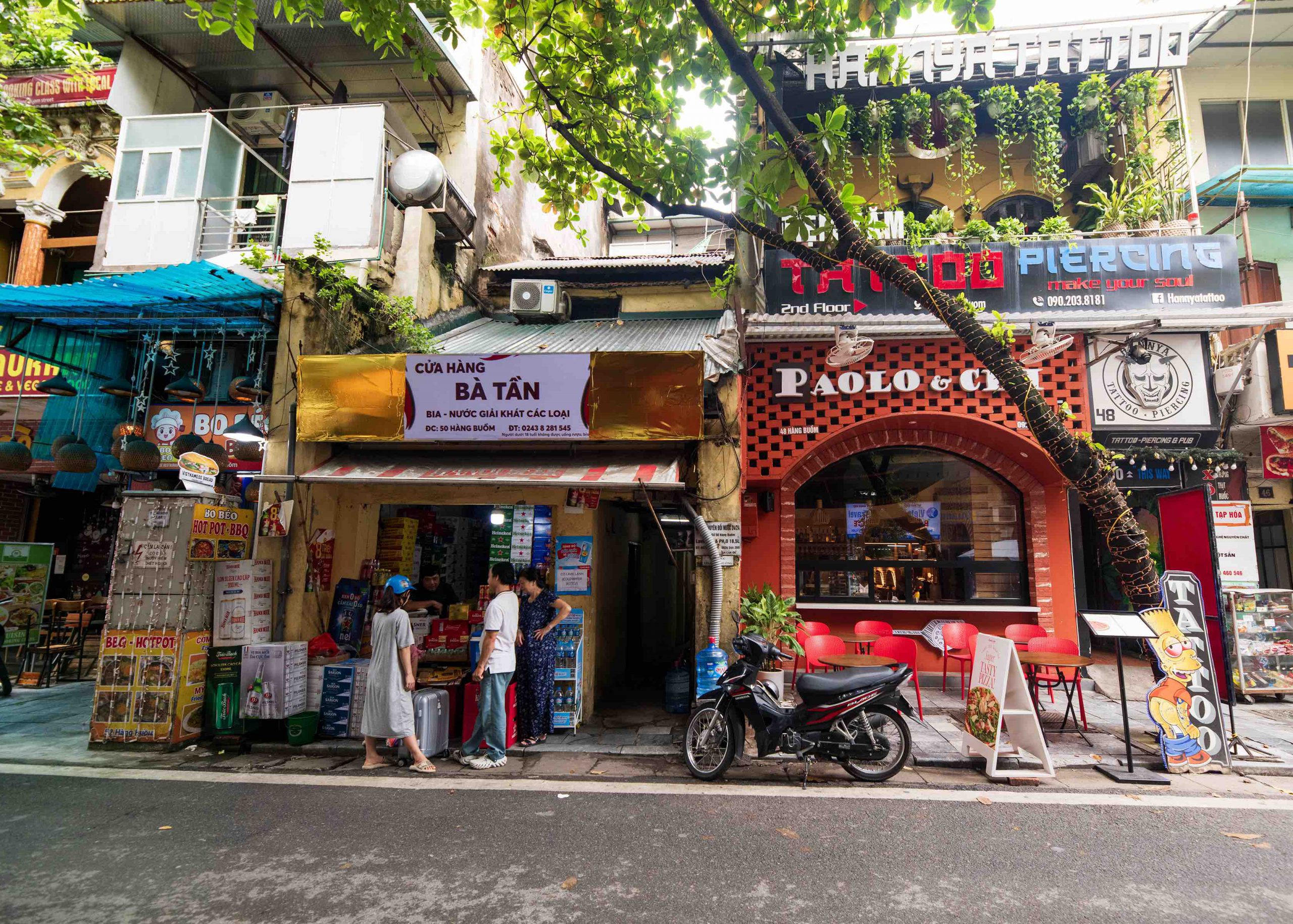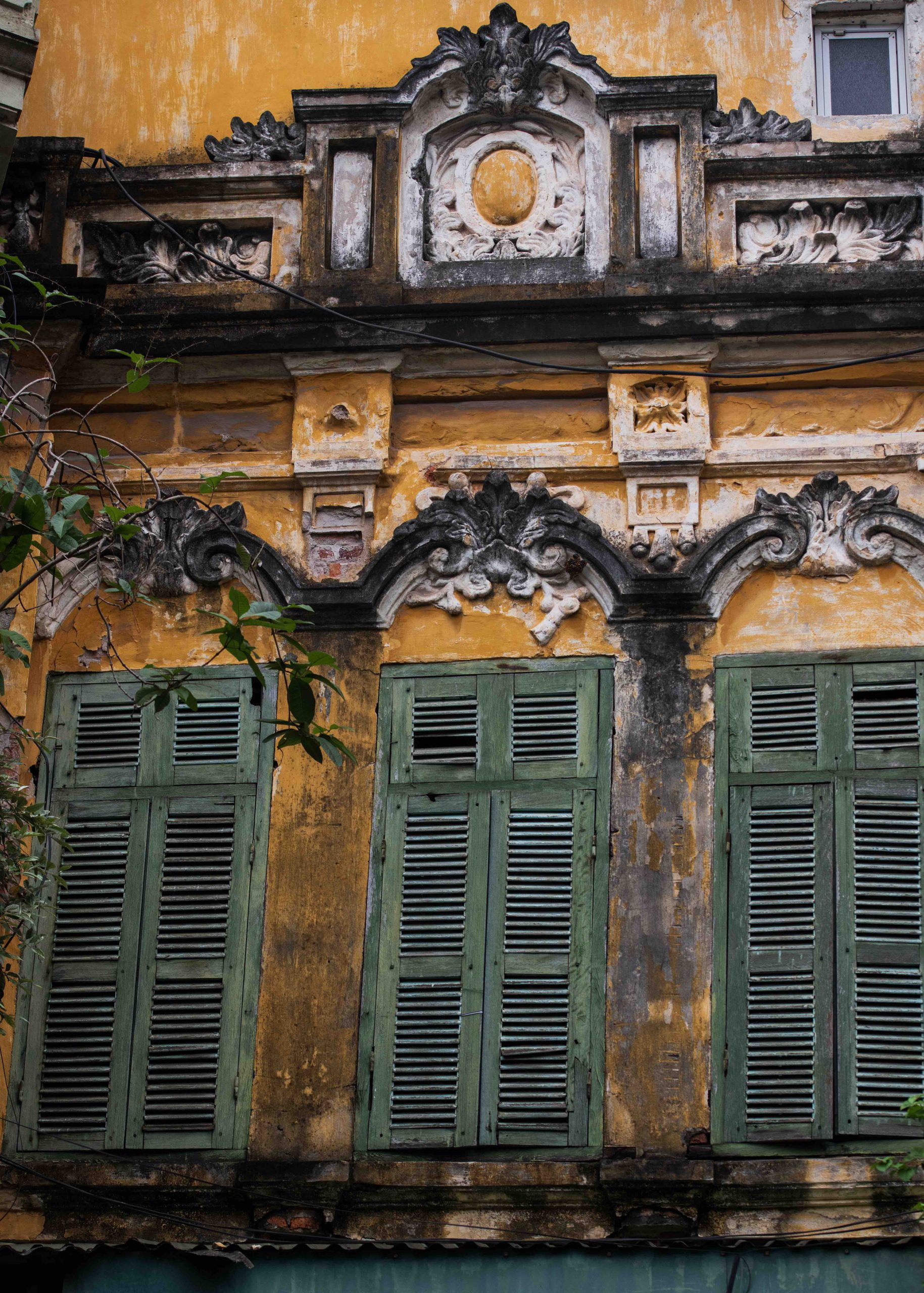Truong Quy
Despite its many wide and long streets, Hanoi is still etched in our cultural memory as a city of “narrow alleys, small streets, where my home is located”, in the words of the song Hanoi and me by composer Le Vinh. Countless images capture the simplicity of these small streets, which have become a defining characteristic of Hanoi. If the main thoroughfares and rivers are likened to major arteries, the small streets and alleys serve as capillaries to nourish the urban body.

“Each narrow alley conceals a heartfelt whisper”
Over a millennium, the market district formed where the old To Lich River flowed into the Red River. The original pathways were designed for vehicles of bygone eras, the largest of which was the royal carriage. Throughout various dynasties, the height of buildings along these streets could not exceed the height of the royal palanquin, and windows on upper floors were prohibited. Photographs taken by the French at the end of the 19th century depict an ancient neighborhood of small houses huddled around narrow streets. Change began when Hanoi was replanned as a Western-style city after 1885, accelerating when it became the capital of French Indochina in 1902. However, aside from the grand boulevards built by the French, the local neighborhoods remained small, divided into long skinny blocks with narrow house facades of only some three meters wide. This resulted in long, winding alleys.
These narrow alleys often reveal unexpected spaces like skylights and courtyards nestled between layers of houses. These spaces provide ventilation and light, forming the heart of each home. A miniature rock garden by a small window or a simple shady tree evokes a discreet life. “Each narrow alley conceals a heartfelt whisper,” wrote the poet Bang Viet in “Returning to One’s Heart.” Famous alleys, such as Phat Loc Alley, Sam Cong Alley (now Dao Duy Tu Alley), Hang Chi, Hang But, and Ngõ Gạch—once a bend in the old To Lich River—have inspired poetry, music, and art. Many streets and alleys still bear the names of old villages, like Yen Thai Street and Bao Khanh Street, or reference local landmarks such as Dong Bridge, Go Bridge, Gao Market, and Tam Thuong Alley.

In these alleys, shops selling local delicacies nestle beside pagodas, temples, and ancient banyan trees, evoking memories of bustling Kẻ Chợ—the former name of Hanoi’s Old Quarter—from centuries past, even as some of its antique charm has faded. The names of streets and alleys contribute to the cultural memory, shining even more brightly when intertwined with poetic sentiments: “A seven-foot alley but a heart that spans a thousand miles. Loving a lifetime is not just a fleeting affection,” wrote the poet Che Lan Vien.
Village roads form urban streets
Thang Long—once the ancient Kẻ Chợ and now modern Hanoi—still retains the structure of the villages that surrounded the old citadel during the Le-Mac era. These areas were home to skilled artisans and craftsmen. Over time, these villages gradually transformed into urban areas, extending the city’s landscape. New streets formed along the old narrow paths, with village roads evolving into narrow streets and alleys, fostering a lifestyle that was part village, part city, just beyond the city’s gates.
Over the decades, many suburban streets and alleys have transformed into bustling urban centers, rivaling the Old Quarter and the French Quarter. Unlike the square grid layout of older streets, these newer areas often follow the irregular boundaries of former rice fields, rivers, or irrigation ditches once tied to agricultural activities. Here, remnants of ponds, lakes, lush banyan trees, and community worship sites still exist. Many alleys and streets are named after historical sites like Lien Phai Pagoda, Quynh Pagoda, and Boc Pagoda, reminding today’s visitors of the era of horse-drawn carriages and offering spots of meditative calm amidst the city’s bustle.
Some alleys even branch off into further alleys, creating a complex maze. For example, Kham Thien Street has 25 off-shooting alleys. This area became known as “B52 Street”, having been decimated by American bombs dropped over 12 days and nights at the end of December 1972. Today, the interplay of old and new forms a vibrant neighborhood with bustling markets, shops, and a strong community spirit.

Hanoi has always embodied lofty aspirations, much like its ancient name Thang Long (Rising Dragon). Tall buildings and wide doors line “the spacious, breezy roads of the five city gates”, as in the song “Hanoi, Belief and Hope” by Phan Nhan. Hanoi also boasts a vast heritage of small streets and alleys. Their small size creates a distinctive identity, reflecting the resilience and adaptability of urbanites in this vibrant area. Visitors are often surprised by Hanoi’s unique character and the extraordinary order within its charming, compact streets, like crystals formed within a swirling mass of life energy.










